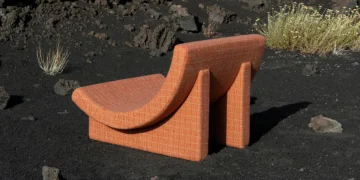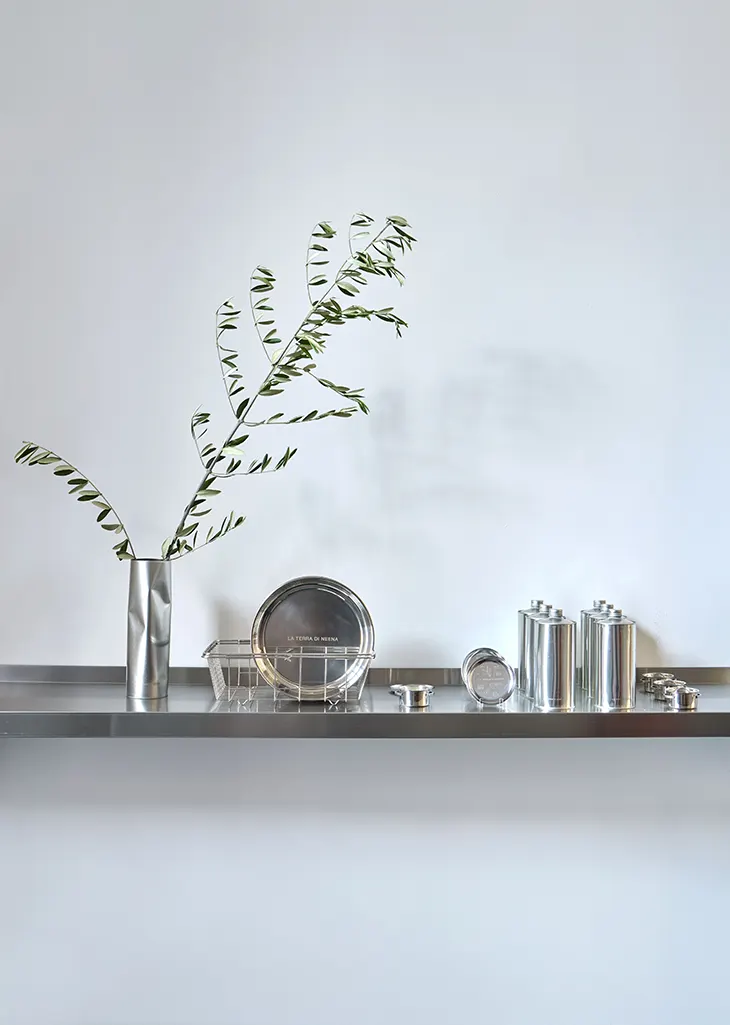
La Terra di Neena continues its international introduction with a presentation developed with Crosby Studios for the inaugural edition of Basic.Space NY. The installation appeared in SoHo from November 14-16, bringing the brand’s family-produced olive oil, sculptural furniture, and home goods to the U.S. for the first time. The project follows the debut at Capsule Plaza during Milan Design Week, where the brand presented its earliest series of objects and established the direction now expanding in New York.
The origins of La Terra di Neena began in Tuscany, where founder Tyler Billinger and Crosby Studios founder Harry Nuriev visited a farmhouse and olive grove with Billinger’s family. That visit prompted the purchase of a neglected seventeenth-century property, which the pair renovated with Crosby Studios’ design language, sharp lines, mirrored surfaces, and sculptural silhouettes shaped through material transformation. Alongside the renovation, Billinger, his parents Nina and Salvatore Marra, and their extended family restored the surrounding olive grove. What began as an informal harvest grew into a broader responsibility to the terrain, leading to agricultural certification and the production of extra virgin olive oil rooted in seasonal output.

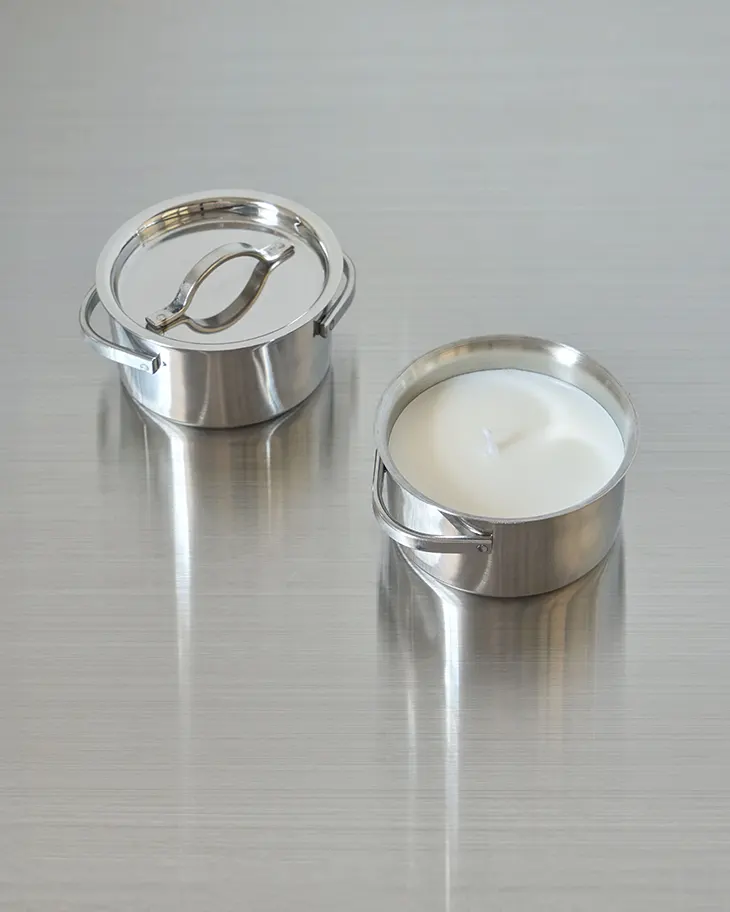
This agricultural shift influenced the visual identity of the brand, which Billinger developed with Crosby Studios. He named the project after his mother as a tribute to the family’s growing involvement in the land. The design direction pulls from the tools and rhythms of the farm, from dented cans once used to store oil to the textures and materials present during harvest. The installation at Milan Design Week reflected these references through 200 chromatic, laser-engraved olive oil canisters, sculptural candles and vases modeled after crushed tins, glycerin soaps cast with olives and branches, mirrored dishware, and a chair assembled from unused cans saved from the previous season.
At Basic.Space NY, La Terra di Neena expanded this vocabulary into larger pieces and new material forms. The installation introduced a dining table, stools, and a monolithic sculpture shaped like oversized dented metal canisters, pushing the tin-can reference into monumental scale. Wax candles appeared in the shape of miniature cooking pots, and mirrored dinner plates engraved with La Terra di Neena and Crosby Studios motifs recalled the casual drawings often made on napkins at long family meals.
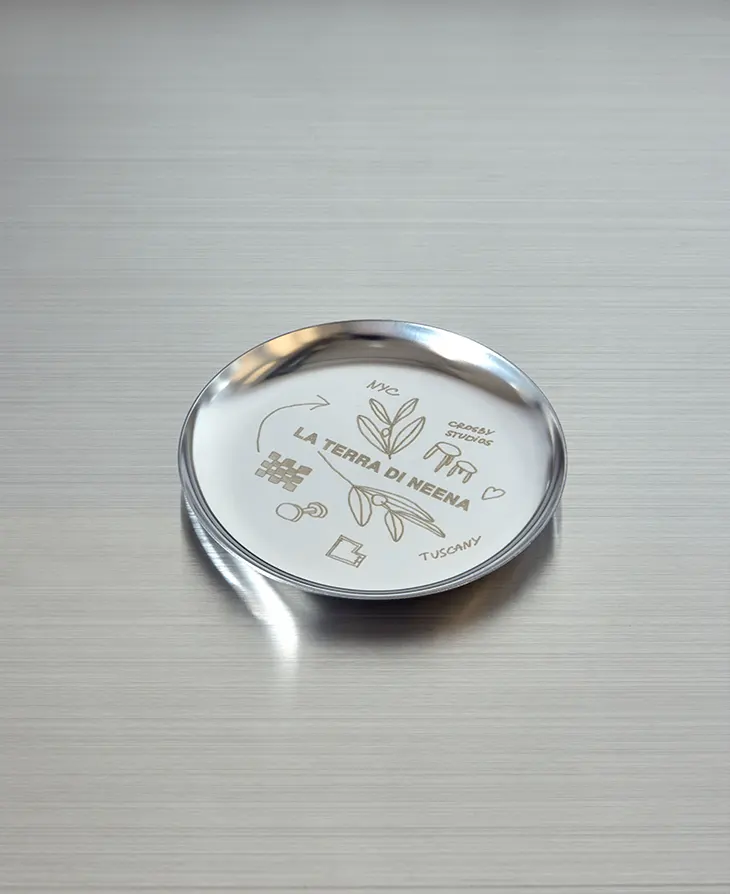
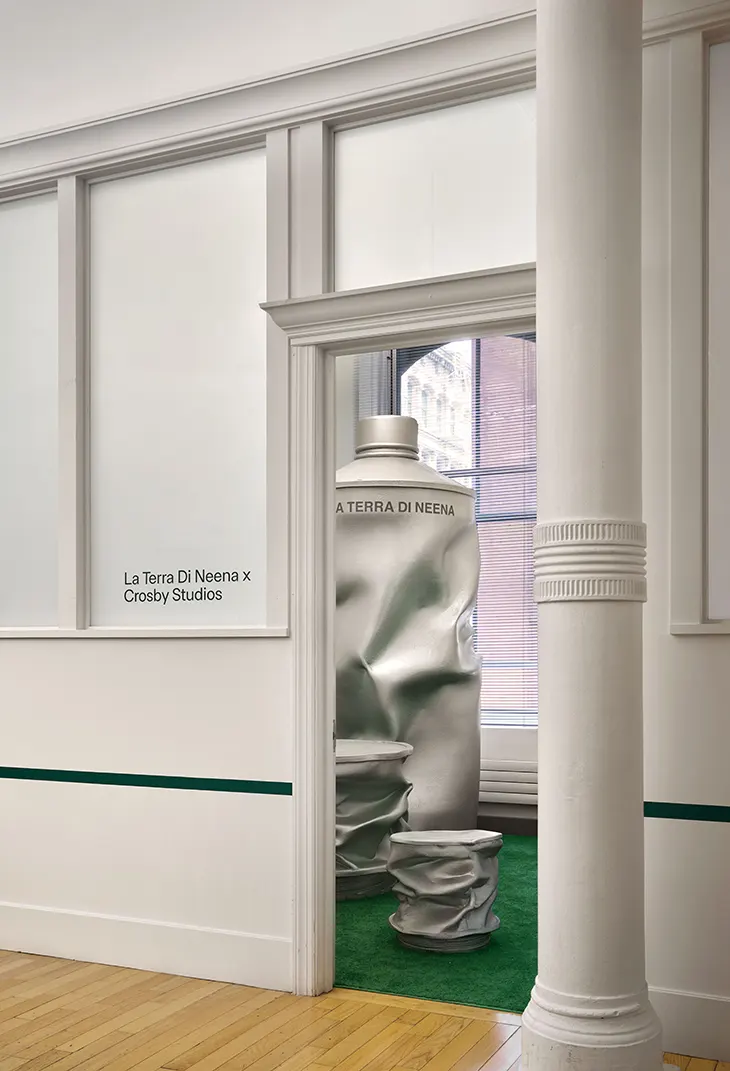
Nuriev described the project through his philosophy of Transformism, the approach that guides Crosby Studios’ creative work. He defines it as turning one object into another by examining its qualities with focused attention. For him, the process begins with recognizing potential in overlooked materials, whether a neglected olive tree or a piece of furniture marked by age.
Billinger views the project as a shift away from digital urgency. Working with the land requires patience shaped by seasonal cycles, and he sees that rhythm reflected in La Terra di Neena’s direction. While the metallic finishes and monochromatic palette echo contemporary visual language, the brand’s foundation arises from physical labor, slow restoration, and calibrated production.

















